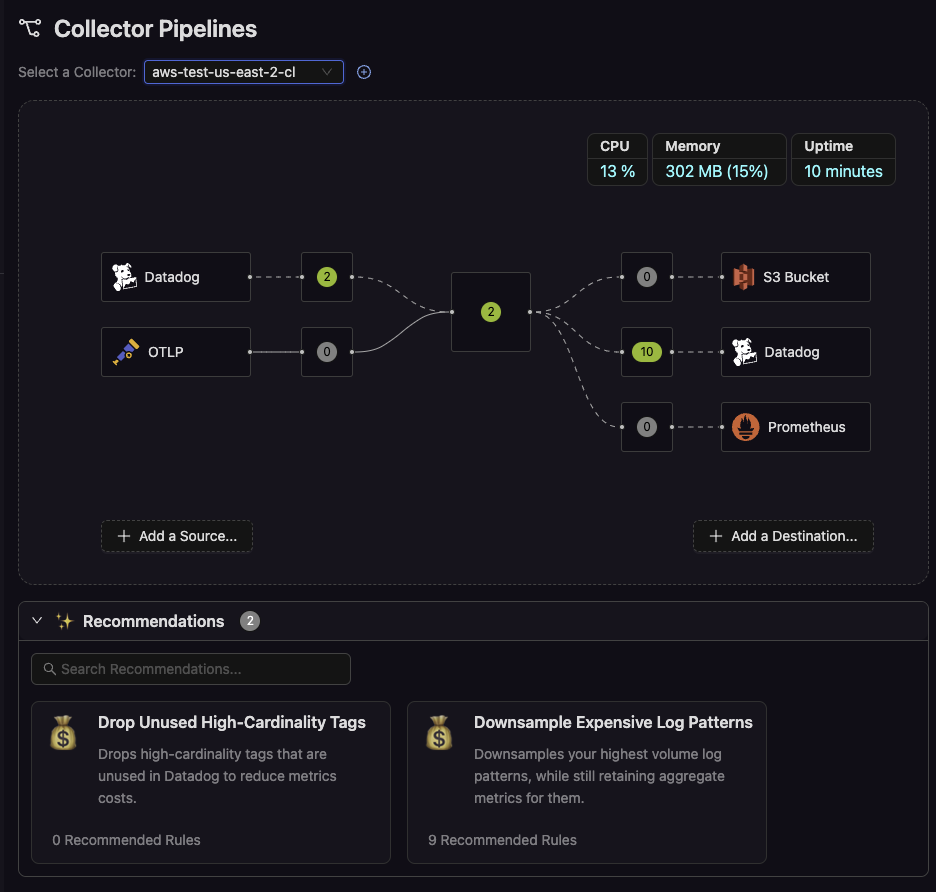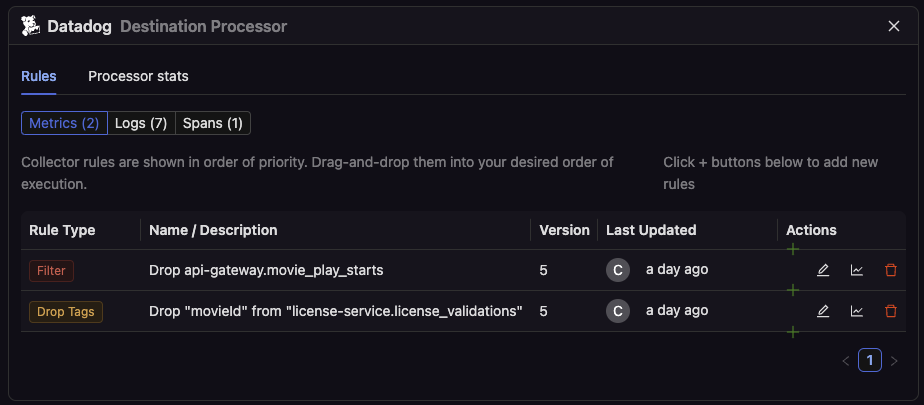Cardinal Managed Collectors
Cardinal Managed Collectors are a remotely configurable layer on top of the OpenTelemetry Collector, designed to simplify and streamline how you gather, process, and send telemetry data. By leveraging CardinalHQ, you gain operational visibility and control over every stage of your telemetry pipeline—without manually configuring or maintaining collectors across your environment.
Pipeline Telemetry & Remote Management
At the heart of Cardinal’s Managed Collectors are Collector Pipelines, which define how telemetry flows from sources to destinations through a series of processors and rules. With CardinalHQ, you can:
- Add or Remove OpenTelemetry Sources (Receivers): Dynamically introduce new data streams (e.g., from applications, infrastructure, or services) or stop unwanted ones—all without touching the underlying infrastructure.
- Manage Sinks (Exporters): Seamlessly re-route telemetry data to different backends (e.g., logging services, metrics storage, or trace analysis tools) at any time. Quickly respond to business needs, compliance requirements, or cost considerations.
- Utilize Managed Processors (Rules): Apply powerful transformations, enrichments, or filters to your telemetry data with simple configuration changes. Whether you’re masking PII, dropping noisy metrics, extracting tags from logs, or sampling traces, these rules ensure that only the most valuable data reaches your destinations.
All of these changes are made via the Cardinal UI (opens in a new tab), ensuring that collectors remain up-to-date and aligned with your current observability strategy. There’s no need to redeploy or manually reconfigure collectors at the host level—CardinalHQ handles it all remotely.
Node and Rule-Level Statistics
Cardinal doesn’t just orchestrate the pipeline; it also provides granular insights into its operation:
-
Node Stats: Keep track of system-level metrics (CPU usage, memory consumption) and understand collector health in real-time. This ensures you have the operational transparency needed to maintain performance and reliability.
-
Rule Stats & Pipeline Telemetry: Monitor how rules affect your data. For example, track how much data is being filtered out, how often tags are being extracted, or how effective your sampling strategies are. This data helps you fine-tune your pipelines for cost savings, compliance, and meaningful analytics.
With these metrics, you can validate assumptions, quickly spot misconfigurations, and continuously optimize your telemetry pipeline’s performance and efficiency.
Collector Telemetry Insights
In addition to managing and transforming data, CardinalHQ’s managed collectors emit telemetry about themselves. This includes information on:
- Pipeline Behavior: Understand how data moves through sources, rules, and destinations.
- Resource Utilization: Gain visibility into CPU, memory, and network usage, ensuring collectors run smoothly and cost-effectively.
- Rule Efficacy: See the impact of each rule, quantifying how many data points are dropped, tagged, masked, or transformed.
By capturing and exposing these operational metrics, CardinalHQ empowers you to adopt a data-driven approach to collector management, helping you adapt quickly as your environment, data volume, or compliance requirements evolve.
Collector Pipelines
A Collector Pipeline consists of one or more telemetry Sources, Destinations, and Rules that can be applied to enrich, transform, filter, and aggregate data.


Pipelines are fully managed through the Cardinal UI (opens in a new tab), and Collectors continuously stay up-to-date with the latest Pipeline configurations. With CardinalHQ Managed Collectors, you gain not just the power to shape your telemetry, but also deep insights into the pipelines themselves, ensuring a smooth, secure, and cost-effective observability experience.